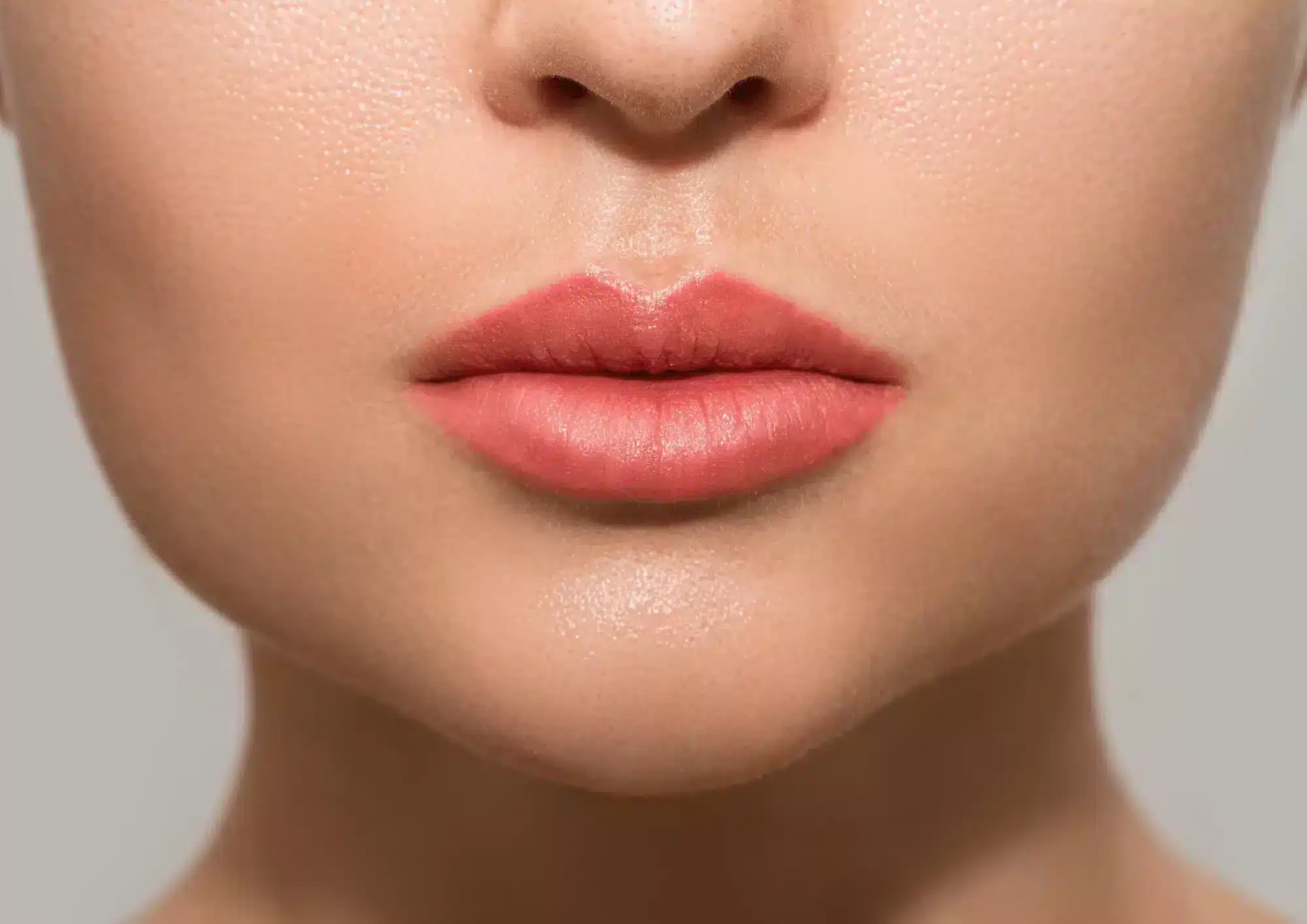
Lip augmentation procedures are among the most popular non-invasive cosmetic procedures practitioners can perform. Clients usually come with age-related concerns, such as thinning lips, vertical wrinkles above the upper lip (also known as “smoker’s lines” or “barcode lines”), flattening of the Cupid’s bow, and the loss of volume. This area is challenging to treat, as it is a highly mobile area, so any non-permanent filler will usually have a decreased duration of action in this area compared with other areas of the face. Typically, the approach used for lip enhancement involves invasive surgery and the use of synthetic or autologous materials for filler. The effects of these procedures are often very long-lasting, with corrections often remaining for up to five years. However, such procedures are costly, involve surgery, and are associated with severe complications, including scarring and asymmetry. Implants such as polytetrafluoroethylene semisolid fillers are another option, but these have their own disadvantages. The permanence of such fillers can be a big drawback if the desired results are not achieved, as removing the fillers is extremely difficult and, in some cases, impossible. Given all this, the properties of the best device for lip augmentation procedures are therefore a soft tissue volumizing agent that can be implanted in a non-invasive manner and offers semi-permanent results.
Can Radiesse be used for lip augmentation?
The use of calcium hydroxylapatite filler (marketed as Radiesse) in the lips has been a matter of debate, as some practitioners discourage the practice due to a reported high risk of nodularity. Kadouch, in his review of Radiesse safety and complications, noted that nodules are predisposed to develop in areas of high muscular activity, such as the lips or periorbital area, due to muscle contractions; however, this claim has been disputed by other researchers that did not note such high incidences of nodularity in their clinical use. This could be attributed to the fact that lip nodules can also be a result of product crowding, which is a consequence of the injector technique. The following steps can help minimize the risk of nodule formation: sufficiently deep product placement; avoidance of overcorrection; and treating nodules and granulomas with triamcinolone either through the administration of local injections or, in persistent cases, through a small incision.
Lip augmentation procedure with Radiesse
Before treating the lips, anesthesia, by either infraorbital nerve or mental nerve blocks, is highly recommended given the sensitivity of this facial region. Radiesse can be administered with a 27- or 25-gauge, one-inch needle to minimize the number of punctures. Radiesse should be injected into the plane between the orbicularis oris muscle and the mucosal border into two punctures for each side.
If more volume is needed for lip fullness in addition to vermillion enhancement, a second line can be injected but should be deeper than the first. If treating the philtrum columns, a separate 27-gauge needle is required.
When treating smoker’s lines, avoid correction by direct filling, as this could result in bumps and unevenness. The linear threading technique is suitable for treating fine perioral lines.
Conclusion
Radiesse is an effective soft-tissue filler that is generally suitable for a variety of clinical applications. When it comes to lip augmentation, the increased risk of nodularity with Radiesse treatment must be taken into account and weighed against its many advantages, including the longevity of results.
Aesthetic medicine products are developed and regulated to meet stringent safety and efficacy standards. They are typically administered by trained healthcare professionals such as dermatologists, plastic surgeons, and specialized nurses in clinical settings. These products aim to provide effective solutions for cosmetic enhancement, skin rejuvenation, and overall aesthetic improvement, contributing to both physical appearance and self-confidence.
Key categories of aesthetic medicine products include:
-
Injectables: This category includes products such as dermal fillers, botulinum toxins (e.g., Botox), and collagen stimulators. These injectables are used to smooth wrinkles, add volume, and improve facial contours.
-
Skin Rejuvenation Treatments: Products like chemical peels, microdermabrasion systems, and laser devices are used to improve skin texture, reduce pigmentation irregularities, and enhance overall skin tone.
-
Skincare Products: These include medical-grade cleansers, moisturizers, serums, and topical treatments containing active ingredients like retinoids, antioxidants, and growth factors. They are formulated to address specific skin concerns such as acne, aging, and hyperpigmentation.
-
Hair Restoration Products: Medical treatments and products designed to promote hair growth and treat conditions such as male and female pattern baldness.
-
Body Contouring and Fat Reduction: Devices and products used for non-surgical body sculpting, such as cryolipolysis (cool sculpting) devices and injectable lipolytics.
-
Cosmeceuticals: High-performance skincare products that bridge the gap between cosmetics and pharmaceuticals, often containing potent ingredients with proven clinical benefits.
-
Wound Care and Scar Management: Products like silicone sheets, gels, and advanced wound dressings used to improve healing and reduce the appearance of scars.





